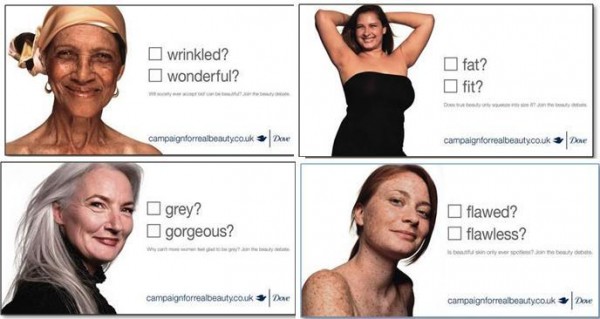In 1987 Eli Lilly and Company won U.S. approval to sell Prozac, the first among a class of drugs called Selective Serotonin Reuptake Inhibitors (SSRIs) that treated clinical depression by elevating levels of serotonin–a chemical believed crucial to regulating mood–in the brain. Prozac’s effectiveness and lack of side effects compared to existing medications for depression revolutionized not only the way mental illness was treated by psychiatrists but also the way it was perceived by the public. By 1992, when Pfizer and SmithKline Beecham introduced their own SSRIs, Zoloft and Paxil, respectively, depression had lost much of its stigma in the United States. In the following years SSRIs became one of the best-selling prescription drug categories. For its first several years on the market, Paxil remained in third place among SSRIs, and SmithKline Beecham set its sights on new markets for the drug. In the mid-1990s Paxil won FDA approval for Continue reading
Advertising Strategies
Case Study: Citibank “Live Richly” Ad Campaign
Founded in 1812 as the City Bank of New York, this urban merchant’s bank continued to expand and diversify its services over the next century. The bank changed its name to Citibank, N.A. (National Association), in 1976, following its parent holding company’s change to Citicorp. In 1998 Citicorp and the Travelers Group completed a $76 billion merger to form Citigroup, Inc. Citicorp was at the time the second-largest commercial bank, and Travelers Group was a leading international insurance/investment banking firm. The Citicorp-Travelers merger thus represented a new era of horizontal expansion. Citigroup then began an acquisition spree that included acquiring in 2002 Golden State Bancorp (the parent company of First Nationwide Mortgage and California Federal Bank), a move that added 352 branches and approximately 1.5 million new customers to Citigroup. By then the company was well on its way to having 3,000 bank branches and consumer-finance offices in the United Continue reading
Case Study: GoDaddy’s Super Bowl Commercials
Bob Parsons sold his first successful company, Parsons Technology, in 1994, and in 1997 he used the proceeds to start a new company, Jomax Technologies. Unsatisfied with the Jomax name, Parsons and his staff came up with the more arresting moniker Go Daddy. As Parsons told Wall Street Transcripts, the name worked ‘‘because the domain name GoDaddy.com was available, but we also noticed that when people hear that name, two things happen. First, they smile. Second, they remember it.’’ After an unsuccessful attempt to establish the company as a source for website-building software, Parsons reinvented Go Daddy as a registrar of Internet domain names, buying unused website names and then reselling them to individuals and businesses in need of an online presence. Go Daddy also offered auxiliary services and products enabling customers to launch their sites after the domain-name purchase, including (as in the company’s early days) software for building Continue reading
Case Study: BMW’s “The Hire” Ad Film Camapaign
BMW (Bayerische Motoren Werke Aktiengesellschaft) is one of the world’s leading luxury carmakers. Founded and based in the Germany, BMW group employed over 100,000 people, making and distributing a series of successful, premium-priced passenger cars and motorcycles. In addition to its manufacturing operations, BMW also provides financial services to support its worldwide sales and distribution of cars and motorcycles. BMW was initially established to build aero engines during the First World War. By 1945, company was still country’s leading aero engine manufacturer. But by 1928, BMW has also started making cars, when it got the license. It was later when BMW became one the biggest automobiles maker in Germany. But after the Second World War, company was laid into ruins. The demand for aero engines subsequently disappeared. Its factories and other capital equipment, which were located in area now controlled by Soviets, were under serious threat. At this point of Continue reading
Case Study: Dove’s Campaign for Real Beauty
Unilevers Dove brand was launched in the market as a cleansing bar soap in 1957. The soap was based non-irritating cleaner and moisturizing component. By 1970s, Unilever had enhanced the soap into a beauty bar, which was milder and promised women of moisturized skins. The popularity of the soap at this time soared, and Unilever started expansion into the global market and by 1996, the brand was selling in over 80 countries. Between 1995 and 2001, Unilever expanded the range of products under the dove brand to include moisturizers, face creams, deodorants, shower gel, shampoos, conditioners, among other wide range of beauty and care products. The key features and attributes of the brand such as its soft colors focused on promoting it as a rejuvenating, calming and exfoliating product brand with milder effects on the skin and high performance moisturizing abilities for dry skins. As the Dove brand mainly targeted Continue reading
Case Study: The Body Shop’s Ruby Ad Campaign
In 1976, when the cosmetics industry was making exaggerated claims about scientific advancements in skin care, Anita Roddick opened a store, The Body Shop, in a seaside town on the southern coast of England. Her product line, based on natural ingredients and age-old beauty secrets from Polynesia and the Amazon rain-forest, was a vast departure from the patented laboratory-created, animal-tested products that promised to stop the aging process, eradicate dark circles under the eyes, and otherwise correct a woman’s flaws. The products were plainly packaged, and they were not tested on animals and not promoted through extravagant advertising campaigns. Her company’s refusal to test products on animals, along with an insistence on non-exploitative labor practices among suppliers around the world, appealed especially to upscale, mainly middle-class women, who were and have continued to be the company’s primary market. Part of the secret of The Body Shop’s early success was that Continue reading





